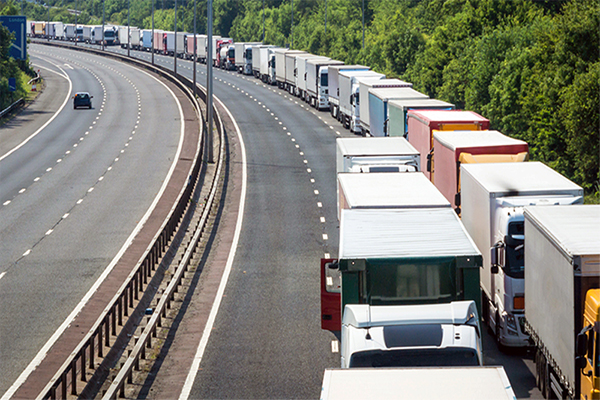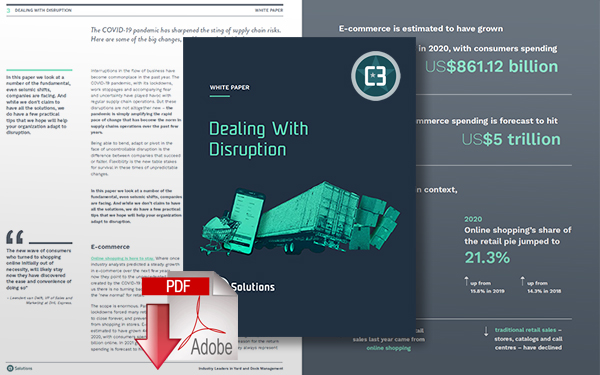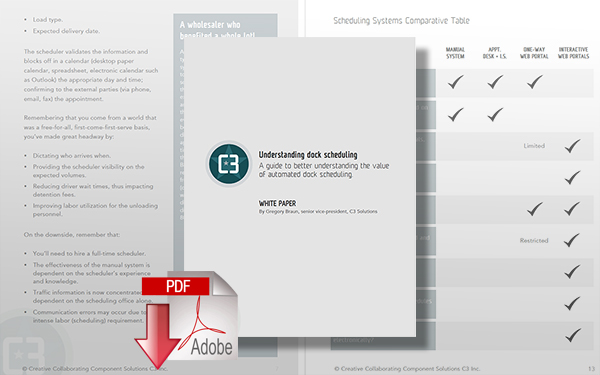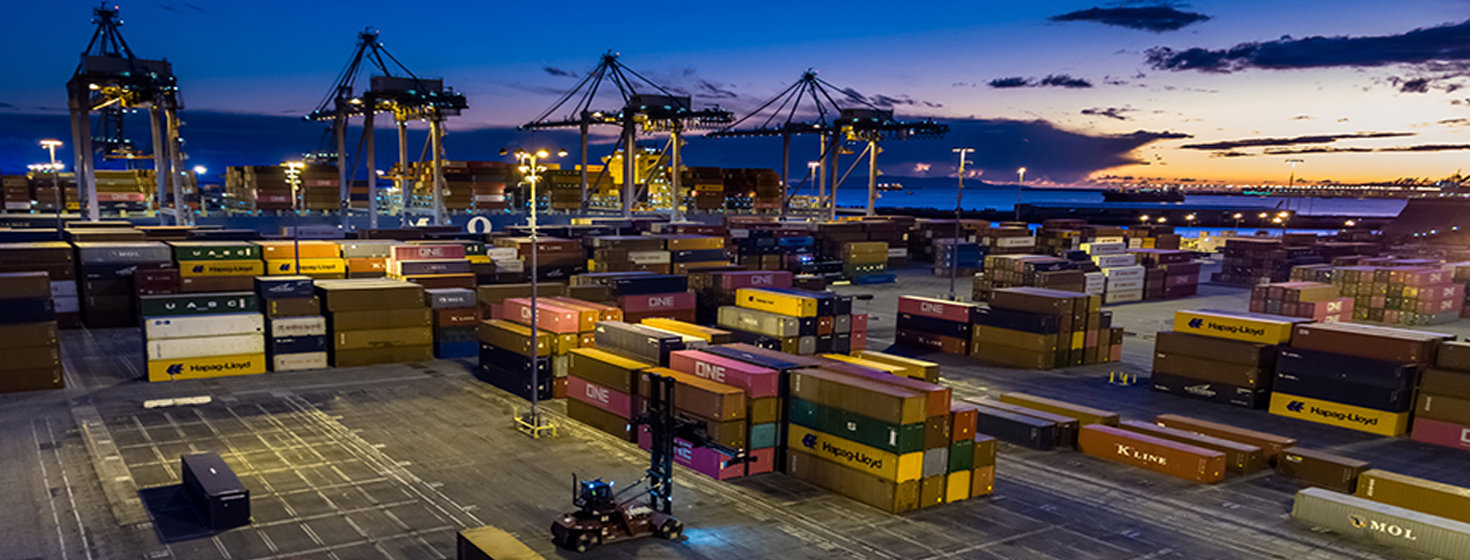Minimizing Driver Dwell Times & Driver Idling by Improving Supply Chain Visibility
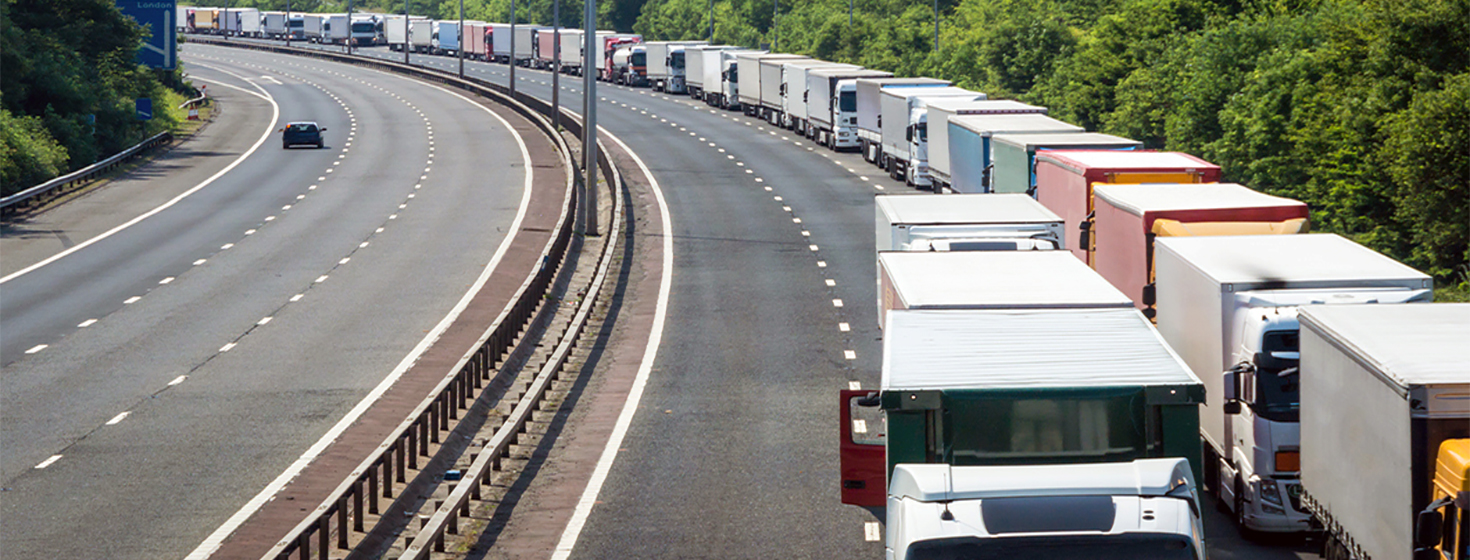
In this article, we detail how to reduce driver dwell times by improving visibility with real-time communication and powerful yard and dock management solutions.
Driver Dwell Times
Driver dwell time averages in the US have been historically high, thanks to bottlenecks choking supply chain operations.
Record high retail consumption in the absence of tangible ways to spend on services led to a spike in US imports in 2021.
FRED data shows that US imports grew by 14.4% year-over-year in October 2021 - and a full 53% growth in imports from the pandemic depth of May ‘20.
The West Coast ports of Los Angeles and Long Beach, which handle roughly 40% of all imports making their way into the country, ended up being the proverbial chicken’s neck to America’s supply chains.
The port terminals cannot handle the incoming import tsunami, with docks overflowing with containers that linger in the terminal. Land-side port operations, including drayage, witnessed the chaos firsthand.
Port truck chassis capacity, which is under control by container lines, created an acute chassis shortage across Southern California, as overflowing warehouses forced drivers to drop the chassis along with the container outside warehouses. The common denominator to these operations is drivers idling - outside chassis sheds, port terminals, transloading docks, and warehousing hubs.
Truckers Idling in the Cab is Nothing New to the Industry
Drivers and loading schedules are seldom in sync, much to the ire of drivers, as some face penalties for arriving earlier or later than scheduled.
The recently constituted ELD mandate also means drivers are bound to their hours of service, with such schedule mismatches costing drivers literal money. COVID-19 added salt to the injury, exacerbating driver dwell times by several multiples of what it was at pre-pandemic times.
From the perspective of warehouses and container yards, the challenge starts with building the ideal schedule. Solving this challenge begins by calculating the correct number of loads to be accepted to be loaded or unloaded for the day, as load optimization is critical to ensuring operations stick to the schedule. Loads that could potentially delay existing schedules - like labor-intensive loads - need to be restricted to specific time windows during the day.
Traditionally, Warehouses Have Next to Zero visibility on When Drivers Arrive
Appointment scheduling and global visibility technologies like C3 Hive can help here, significantly streamlining schedules and driver arrivals (watch the video above).
Considering drivers usually come either in advance or late to their scheduled slot on any given day, providing a way for warehouses to know when a driver would tentatively arrive helps smoothen operations and reduce driver dwell times. Visibility can be brought by geofencing technology, helping warehouses detect when drivers are close and allowing them to prepare for loading or unloading by the time the truck arrives at the location.
Proactively knowing truck arrival times would help dynamically modify yard schedules, assisting workers in engaging with trucks that come early and accommodating them in the slots of trucks running late. This way, warehouses can avoid bottlenecks due to trucks crowding in across a specific time window, which often results in a free-for-all dash for loading preference.
By ensuring smoother loading and unloading at warehouses, operations can become more efficient and increase overall productivity levels. Today, the pandemic has caused warehouses to overflowing, with erratic schedules forcing drivers to queue outside warehouses waiting to unload.
But live unloads taking several hours on top of idling in the warehousing premises have led drivers to increasingly drop their trailers off with containers strapped to them and leave without hooking onto trailers - thanks to a severe shortage of free chassis at warehouses. Warehouse inefficiency in unloading containers off truck chassis is one of the primary reasons for the chassis shortage in the market today.
The Driver Shortage is Not Without Rationale
Aside from being a difficult job, drivers are also not treated well across a concerning number of shipper and receiver locations, with reports highlighting drivers refused restroom access while being stuck in a queue for hauling loads. Though COVID-19 transmission fears get cited as reasons for such refusals, drivers need to be treated as frontline workers and be allowed to work with dignity.
An MIT study estimated that trucking capacity shortage is a problem not due to an actual shortage in capacity but instead to driver inefficiency in the way they spend available hours of service.
The study found that drivers spend only about seven hours a day driving within the allowed 11 hours a day. Every driver in the US increasing their driving time by a mere 12 minutes every day would help end the industry-wide capacity shortage.
The demanding nature of waiting outside warehouses and intermodal hubs has resulted in the long-haul trucking industry struggling to find enough drivers as overall volumes keep growing. For the drivers, all the minutes they spend off the road and not driving are wasted minutes they are losing pay, naturally making them resent extended dwell times.
In essence, ensuring drivers can engage with the warehouse remotely and streamline yard operations would help kill two birds with one stone - drastically cutting down driver dwell times while elevating warehouse efficiency.
Related Resources
Leveling Up: Navigating the New Trucking Landscape
The goal of this White Paper is to, not only provide a deeper understanding of the causes of the situation but also outline ideas you can apply to your own logistics operation. Download Now!
Dealing with Disruption
In this paper, we look at a number of the fundamental, even seismic shifts, companies are facing, and while we don’t claim to have all the solutions, we do have a few practical tips that we hope will help your organization adapt to disruption. Download Now!
Supply Chain Visibility: Illuminating the Path to Responsive, Agile Operations
The purpose of this paper is to take a step back and look at what visibility really means in supply chain operations, and what it can do for you - using real-world case studies - along with an outline of the conditions you need to achieve it. Download Now!
C3 Solutions: Understanding Dock Scheduling
Understanding dock scheduling: A guide to better understanding the value of automated dock scheduling. Download Now!
More Resources from C3 Solutions
Related Article: Looking at Dock & Yard Management Technology to Solve Supply Chain Chaos
Article Topics
C3 Solutions News & Resources
Efficient Automation Can Significantly Increase Warehouse Productivity C3 Solutions Major Trends for Yard and Dock Management in 2024 Replace Your Antiquated Spreadsheets with C3 Solutions’ Cloud Based Software Adapting to New Realities Shaping the Next-Gen Grocery Shopping Experience The Shipper’s Handbook to Managing Expectations This Holiday Season Dock Scheduling Allows Food Distributor to Avoid Detention Charges The Dynamic Grocery Market More C3 SolutionsLatest in Warehouse|DC
Talking Supply Chain: Understanding the FTC’s ban on noncompetes North Carolina Welcomes Amazon’s Newest Mega-Warehouse SAP Unveils New AI-Driven Supply Chain Innovations U.S. Manufacturing is Growing but Employment Not Keeping Pace Maximize Warehouse Space with Mezzanine Automation: Expert Tips Most Companies Unprepared For Supply Chain Emergency Microsoft Unveils New AI Innovations For Warehouses More Warehouse|DC